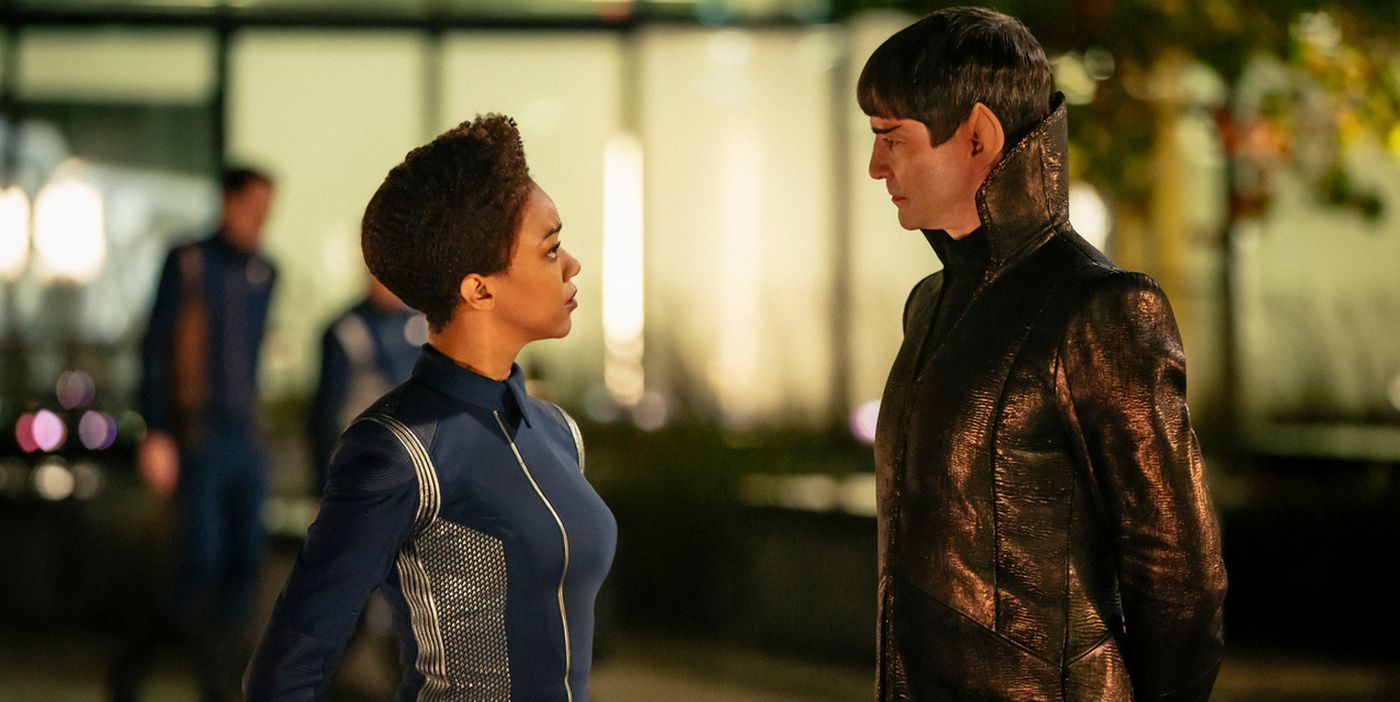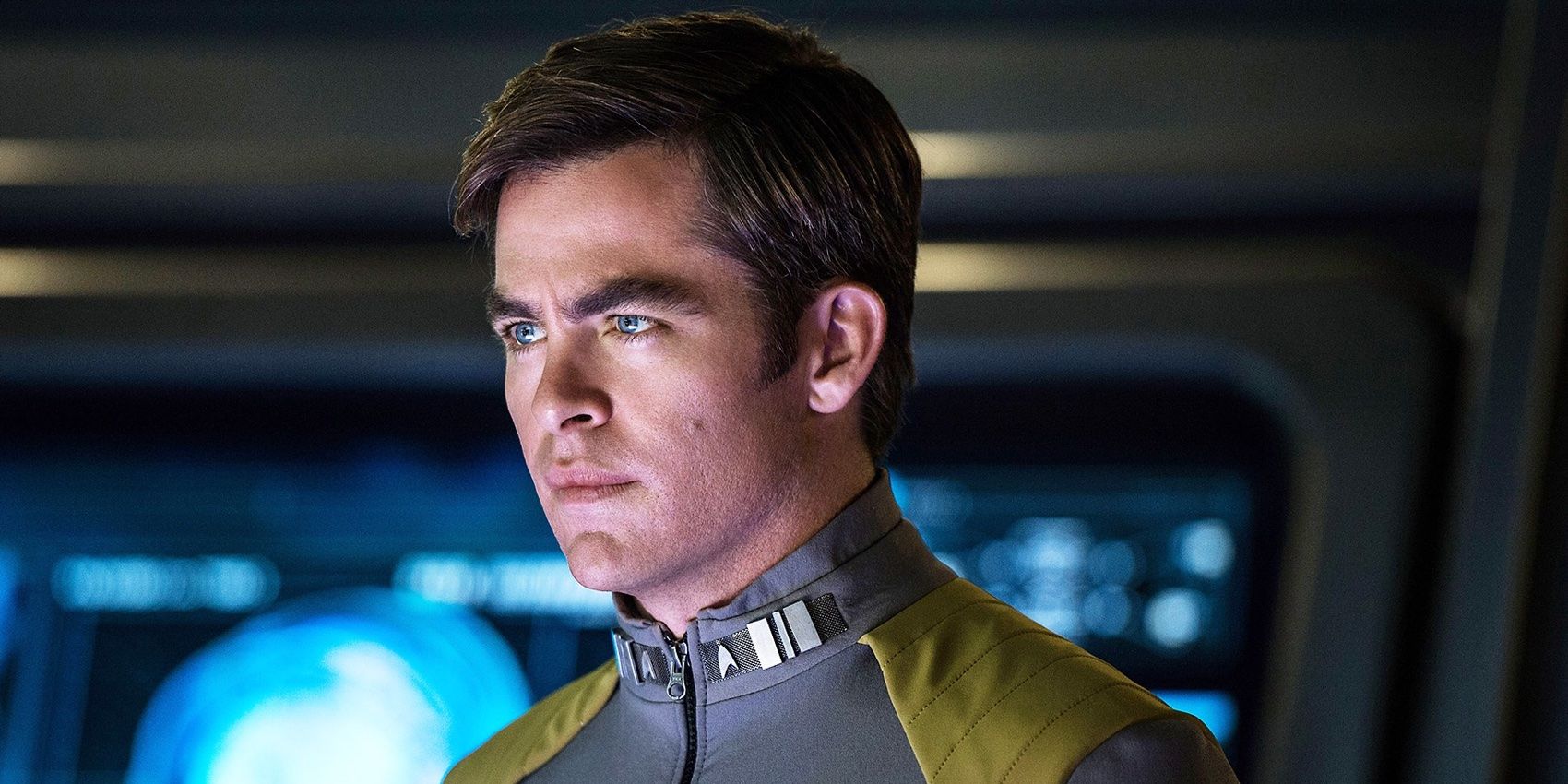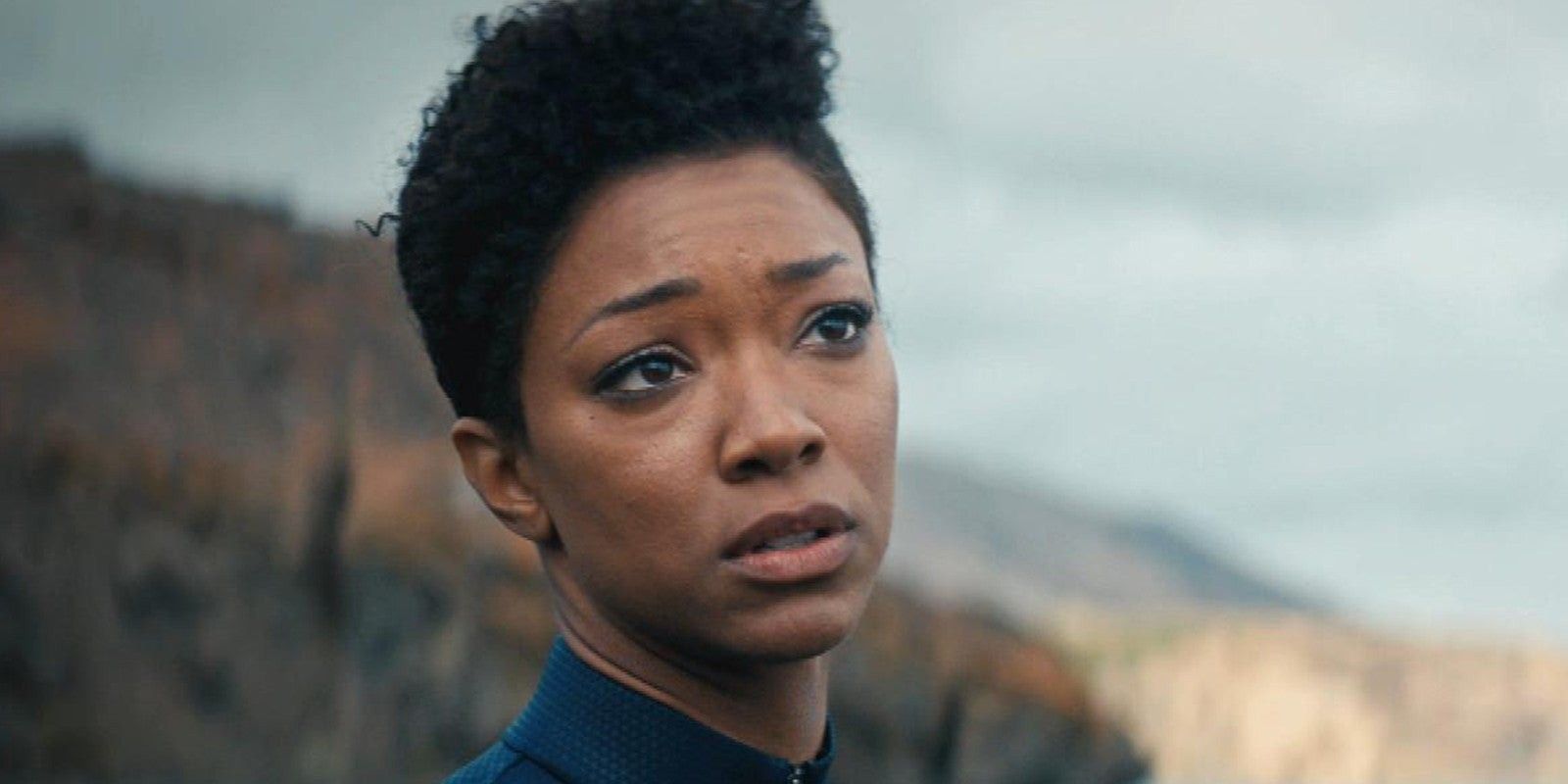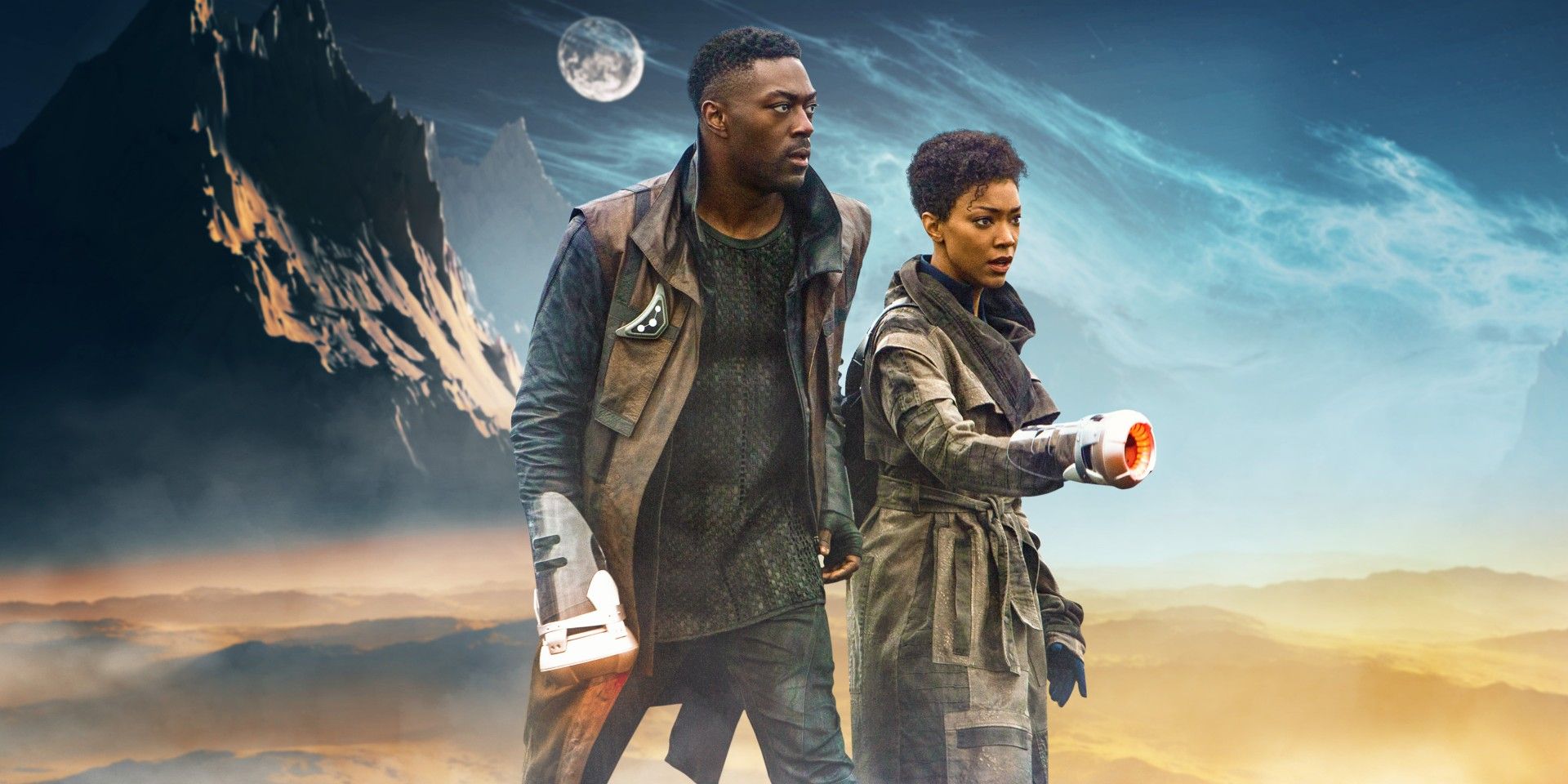Is Star Trek: Discovery season 3 set in THE future, or just an alternate timeline? Star Trek: Discovery season 2 ended in dramatic fashion, with Sonequa Martin-Green's Michael Burnham and her crew finding themselves responsible for defending an all-knowledgeable data sphere from Control, a dangerous AI program threatening to wipe out all organic life. Rarely ones to catch a break, the Discovery's only option is to warp both itself and the data sphere into the far future via a wormhole, dragging the sphere out of Control's reach.
Star Trek: Discovery season 3 recently premiered with "That Hope Is You, Part I," bringing a mixture of good and bad news for Burnham. On one hand, the Control plan was a success. Burnham arrives in the future, immediately scans for life, and is overjoyed to learn that the galaxy has not been overrun by evil mechanical robots - sentient flesh and blood is still thriving. Unfortunately, Burnham's day quickly goes downhill. She discovers the Federation is all but extinguished, fails to find her missing ship, and is attacked by a mysterious man armed with a British accent and throwing knives.
Eventually identifying himself as Cleveland "Book" Booker, the enigmatic courier soon proves he's not so bad after all, and forges a quick partnership with Burnham, who reciprocates by revealing her time travel story in full. Together, Burnham and Book (and Grudge the cat) will spend the remainder of Star Trek: Discovery season 3 searching for the Discovery, locating pockets of remaining Federation believers, and unlocking the secrets of the mysterious "Burn" event. But are these events happening in the definitive future of the Star Trek timeline, or an alternate reality?
How Discovery Fits Into The Star Trek Timeline
Star Trek: Discovery begins approximately a decade prior to Kirk and Spock's adventures in The Original Series, and the first two seasons span a two-year period. Despite the criticism aimed Star Trek: Discovery's way, the series does take place within the prime continuity that incorporates the other 5 main TV shows and the movies up to Star Trek: Nemesis. The Klingons might look radically different and the spore drive technology might be centuries ahead of the Enterprise's giant iPads, but Star Trek: Discovery is very much part of the main continuity, and has made efforts to smooth over the cracks. For example, the Discovery's trip to the future explains why Starfleet don't pursue their spore drive tech, and also why Spock never mentions Burnham during his time on the Enterprise.
Star Trek: Discovery season 3 takes place in the 32nd century - the year 3188 to be precise. The only slice of Star Trek canon to venture this far into the future is the "Living Witness" episode of Star Trek: Voyager season 4, in which the ship's holographic doctor is reactivated centuries after the deaths of his mortal crew mates. Even so, Star Trek: Discovery will provide the first in-depth exploration of Star Trek's new millennium. Whether or not season 3 takes place within the same timeline, however, is a matter of debate.
Star Trek Has A Long History Of Alternate Timelines
The most obvious example of an alternate timeline in Star Trek comes from the J.J. Abrams movie reboot, which officially established a new continuity known as the Kelvin timeline. In 2009's Star Trek, Nero leads a crew of renegade Romulans into the past, destroying the U.S.S. Kelvin captained by one George Kirk. This single event creates a deviation in the Star Trek timeline - the original in which William Shatner dropkicks his way through the Enterprise's ongoing mission, and an alternate timeline in which Chris Pine's Kirk battles against Khan in Star Trek Into Darkness and against the box office in Star Trek Beyond. Although this is undoubtedly the most seismic shift to Star Trek chronology, there are plenty of other examples of alternate timelines.
The final episode of Star Trek: The Next Generation saw Q whiz Jean-Luc Picard 25 years into his future. This timeline ceased to exist after Q's plan was foiled, and Star Trek: Picard proves that the events of "All Good Things.." never came to pass, but elements such as Picard's parietal lobe defect and spending retirement in the family vineyard are consistent in both, suggesting Q's future was a genuine alternate reality, if only briefly. Even in The Original Series, alternate realities caused chaos for the Enterprise crew. In the classic "The City on the Edge of Forever," Kirk and Spock glimpse a dark timeline that will become reality if McCoy is allowed to alter history by rescuing Edith Keeler.
Michael Burnham previously encountered parallel realities in Star Trek: Discovery season 1, courtesy of Harry Mudd's time loop. These were fleeting timelines constantly being overwritten, but the grim future of the 32nd century in Star Trek: Discovery season 3 could be a permanent split in the franchise.
Michael Hints That This May Not Be The Only Future
Star Trek: Discovery's season 3 premiere is incredibly vague about the nature of its futuristic setting. Burnham knows nothing about her surroundings, relying on Book to provide her (and the audience) with crucial details. Moreover, no one in "That Hope Is You" has a firm grasp on the mechanics of time travel. Burnham, Book and Sahil can only make educated guesses as to the Discovery's arrival, and there's no all-knowing Spock or Stamets to propose the possibility of creating an alternate timeline. The ambiguity means it's impossible to tell whether Burnham is still occupying the prime Star Trek timeline or not.
Nevertheless, the first episode of Star Trek: Discovery season 3 does subtly hint towards a split in the timeline. Firstly, Burnham relays the Discovery's story to Book and tells of their hope to "ensure the future... A future." This line suggests Burnham isn't 100% sure whether she's landed in the 32nd century of her native timeline, or somewhere entirely different. Burnham's second hint concerns the location of Terralysium. The Red Angel's coordinates were programmed to land on Terralysium because the Discovery crew had visited the planet previously, and knew it to be suitable for human life. Curiously, Book confirms that Burnham has actually landed on Hima, not even indicating an awareness of a "Terralysium." Burnham had already popped out of the wormhole when she collided with Book in space, so there's no reason she shouldn't land at the intended location. Unless, perhaps, Terralysium is known as Hima in this alternate reality. When Burnham programmed the Red Angel to navigate the wormhole, she likely didn't account for the various other realities the tunnel connected to, nor or specify which version of Terralysium she was heading to.
Finally, the 32nd century is a vast departure from the world Burnham left behind, even considering the 900-year gap. The fall of the Federation aside, Burnham learns that the Andorians are working alongside the Orions, and the Gorn have destroyed large swathes of sub-space. There's very little to connect the two disparate settings of Star Trek: Discovery seasons 2 & 3.
Star Trek: Discovery Is Actually Set In An Alternate Future
Previous examples of alternate timelines in Star Trek (and, indeed, most of the science fiction genre) are created by excursions from the future into the past. The creation of the Kelvin timeline, for example, occurs when Nero pilots the Narada from 2387 to 2233. From that moment forth, Abrams' divergence created two separate realities. The same logic doesn't necessarily apply when Burnham travels from the past into the future as, depending on which model of time travel one subscribes to, the singularity (i.e. Burnham arriving in the 32rd century) always happened. Therefore, if Star Trek: Discovery season 3 does take place in a separate timeline, the time-hopping exploits of the Discovery are unlikely to be have caused it. However, there is another major event potentially responsible for carving up Star Trek continuity... again.
Book describes "the Burn" as the moment the galaxy took a "hard left." Most of the dilithium in the quadrant spontaneously destabilized, resulting in profound loss of life, the destruction of warp-capable ships, and a dramatic shift in the political landscape of the galaxy. The cause of the Burn remains a mystery in the 32nd century, setting up a dramatic reveal for later in Star Trek: Discovery season 3. The event has created a post-apocalyptic landscape and succeeded where many others have failed by destroying Starfleet - this is highly unlikely to be accidental. The enigmatic perpetrators of the Burn could be time travelers themselves, and responsible for splitting the continuity in two. In the Prime timeline, the Burn never happened and Starfleet continued evolving from strength to strength. The timeline Burnham lands in could be a reality created 100 years prior by as-yet-unknown aggressors, currently sitting alongside both the Prime and Kelvin timelines.





